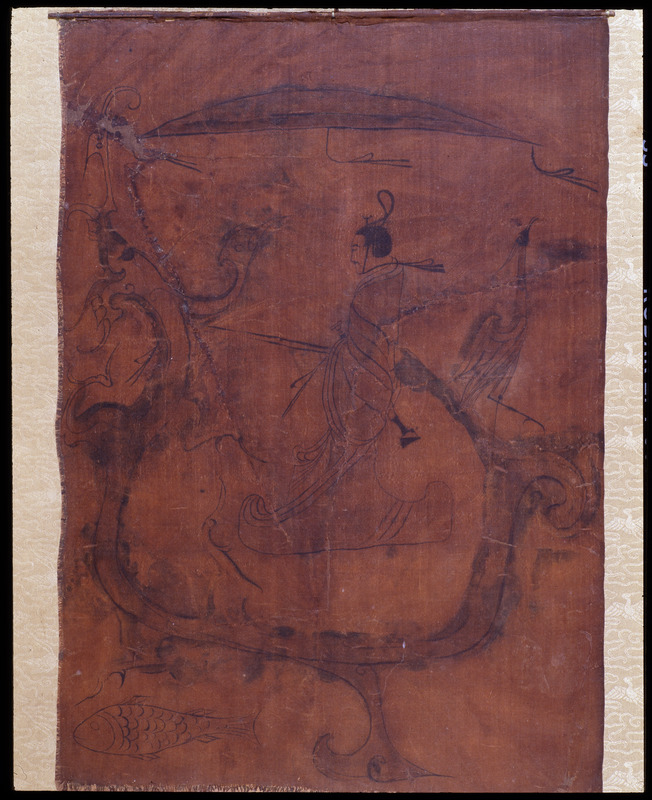Figure Driving a Dragon, Ink on Silk

Figure Driving a Dragon
Warring States period (475-221BC)
Ink on silk
Height:37.5 cm, Width: 28cm
Excavated from the Tombs of the States of Chu, Zidanku, Changsha City, Hunan Province, 1973
This painting could be described as the sister work to Figure with Dragon and Phoenix: the two paintings are from the same period and executed with very similar styles and techniques. However, Figure Driving a Dragon displays a more mature talent. The centre of the painting features a bearded man standing in profile with a sword hung from his waist, and reins in his hands driving a dragon. The dragon’s head is elevated while its body lies flat like a boat with a heron on its rising tail. It has round eyes, a long snout, and plumage on its crown. Its head is upturned towards the sky. There is an awning over the figure in the centre with three pennants flapping in the wind. The artist has skillfully used points of fine detail to offset the overarching theme of the work. The figure and the dragon are both facing towards the right, strengthening the work’s directionality and the sense that the figure and dragon he is driving are in motion.
The man in the image is possibly a profile portrait of the deceased, wearing a lofty hat and sporting a broad and fearsome sword. The white heron has a dual symbolic value: as a representation of the man’s superlative integrity and as a creature from mythical lands of the immortals. The painting as a whole presents the man’s progression away from the earthly world as he leaps upwards to travel through the Heavens. That he is driving dragons and riding the wind, accompanied by herons, expresses the man’s elevated grace. This illustration of an expansive cosmos is an authentic manifestation of the arts of China, as well as a reflection of China’s unique understanding of life and death.
深入探索
Dragons in Traditional Chinese Culture
Traditional Chinese culture saw dragons as divine creatures capable of traversing Heaven and Earth. These numinous beasts could carry men or gods on an ascent to the Heavens, or take them travelling in the celestial realm. Dragons reflect the romanticism that suffused the early Chinese experience of nature. This painting reflects the early Chinese wish for the soul to continue to exist after death, riding a dragon across the sky or ascending to the Heavens.



